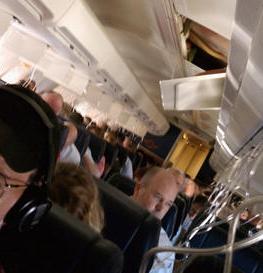|
|||||||||||||||||
|
|
|
|||
|
FAA Mandates
Inspections On Early Models Of The Boeing 737 Aircraft By Jim Douglas |
||||
 |
April
5, 2011 - The FAA will issue an emergency directive today
that will require operators of specific early Boeing 737
models to conduct initial and repetitive electromagnetic
inspections for fatigue damage. This action will initially
apply to a total of approximately 175 aircraft worldwide, 80
of which are U.S.-registered aircraft. Most of the aircraft
in the
This
come in light of Southwest Airlines Flight 812 a Boeing 737
aircraft (N632SW) which experienced an in-flight fuselage
rupture in the top of the aircraft, approximately mid-cabin
that occurred on Friday evening that led to a rapid
depressurization of the aircraft and oxygen masks were
deployed.
|
|||
|
?The FAA has comprehensive programs in place to protect commercial aircraft from structural damage as they age,? said FAA Administrator Randy Babbitt. ?This action is designed to detect cracking in a specific part of the aircraft that cannot be spotted with visual inspection.? The FAA airworthiness directive will require initial inspections using electromagnetic, or eddy-current, technology in specific areas of the aircraft fuselage on certain Boeing 737 aircraft in the -300, -400 and -500 series that have accumulated more than 30,000 flight cycles. It will then require repetitive inspections at regular intervals. Last November, the FAA published a rule designed specifically to address widespread fatigue damage in aging aircraft. The rule requires aircraft manufacturers to establish a number of flight cycles or hours a plane can operate and be free from fatigue damage. The rule requires aircraft manufacturers to incorporate the limits into their maintenance programs. Southwest Airlines is working with the National Transportation Safety Board (NTSB) to determine the cause of the rupture. Further, the carrier has decided to keep a subset of its Boeing 737 fleet out of the flying schedule to begin an aggressive inspection effort in cooperation with Boeing engineers. |
||||

